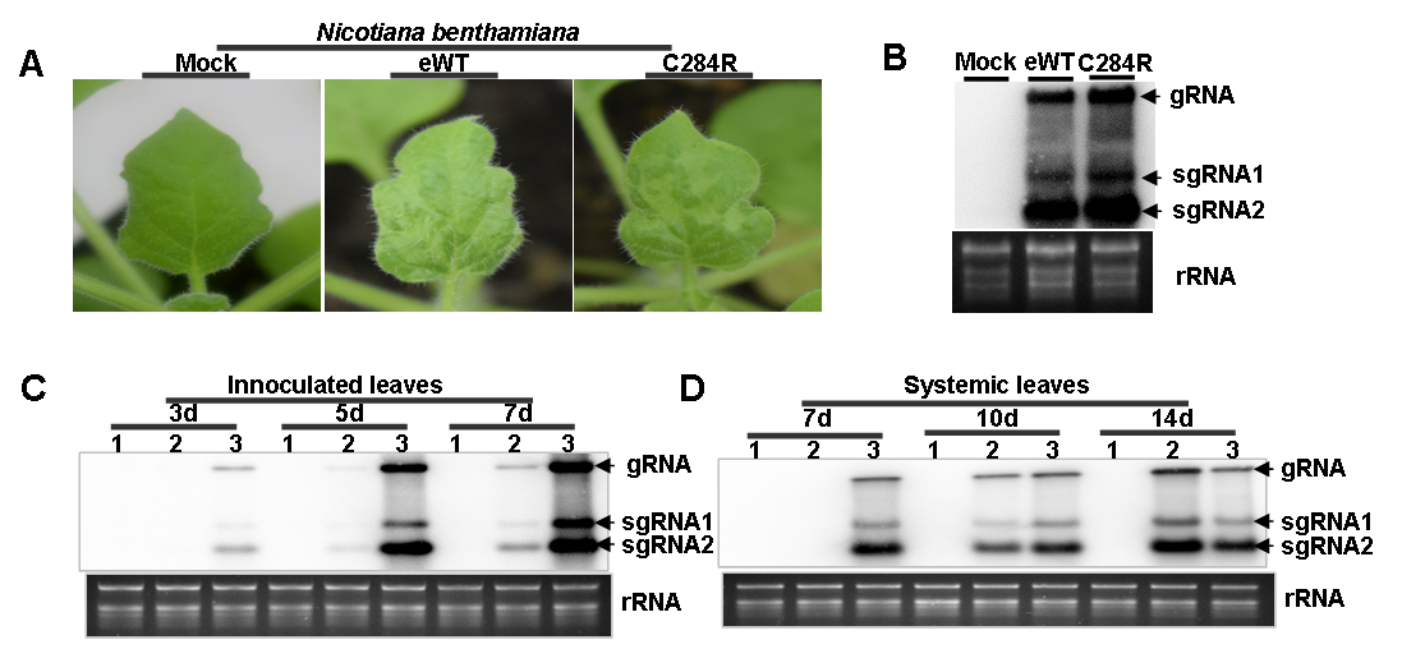The research team led by Professor Gu Qinsheng from the Zhengzhou Fruit Research Institute of Chinese Academy of Agricultural Sciences (CAAS) has been working on the prevention and control of cucurbit viral diseases. As cross-protection comes up, it supplies an interesting and efficient mean for the control of cucurbit viruses. Herein, an important research stride on the construction of infectious clones of cucurbit viruses and the acquisition of good candidates to attain stable symptom attenuation for them has been made.
Herein, an agroinfectious cDNA clone for the hn isolate of Cucumber green mottle mosaic virus (CGMMV) was developed and a nonconserved mutation involving a single nucleotide change resulting in the replacement of Arg by Cys at residue 284 of the replicase protein which should be reversed to restorethe wild-type symptoms by inoculation was found out. Subsequently, four further mutants wereassayed andresults showed that enhanced pathogenicity always correlating with reversion to Arg284 andat least two mutants were identified as good candidates to attain stable symptom attenuation that could be useful in cross-protection.

Figure 1 eWT and C284R symptom induction and RNA accumulation and comparison of C284R and pXT1-Cucumber green mottle mosaic virus (CGMMV) RNA accumulation
Furthermore, to understand the effect of assembly initiation site and the adjacent region on CGMMV infectivity, three related mutants (V97, V94A and T104A)were created and inoculation assays showed they could cause mosaic and had a common spontaneous E96K mutation in the coat protein. Subsequently, fivefurther mutants were assayed andresults showed E96 affected CGMMV infection, which further confirmed the successful infection of the related mutants, and that E96K can compensate the effect of the V94, V97, and T104 mutations on virus infectivity.
The occurrence of a spontaneous and non-anticipatory mutation in CGMMVis unlikely to be a random event,and selective forces govern survival and reproduction. The evolution of viral fitness has to be considered simultaneously with the selective forces. Currently, we are investigating the coincidence of viral fitness, which provide guide forthe acquisition of the stable attenuated isolates.
More importantly, the research team have successfully constructed the largest number of infectious clones of cucurbit viruses in the world including Zucchini yellow mosaic virus (ZYMV), Watermelon mosaic virus (WMV), Papaya ringspot virus (PRSV), Melon necrotic spot virus (MNSV), Cucurbit aphid-borne yellows virus (CABYV) and Squash Mosaic Virus (SqMV) pave the way for the acquisition of the attenuated isolates of these viruses by genetic engineering.
The research was supported by the Modern Agroindustry Technology Research System (number CARS-26-13), the National Natural Science Foundation of China (31572147) and the Agricultural Science and Technology Innovation Program (CAAS-ASTIP-2015-ZFRI).More details can be found in the link:
http://europepmc.org/abstract/MED/28545349
http://www.mdpi.com/1999-4915/10/1/6
By Liu Liming
